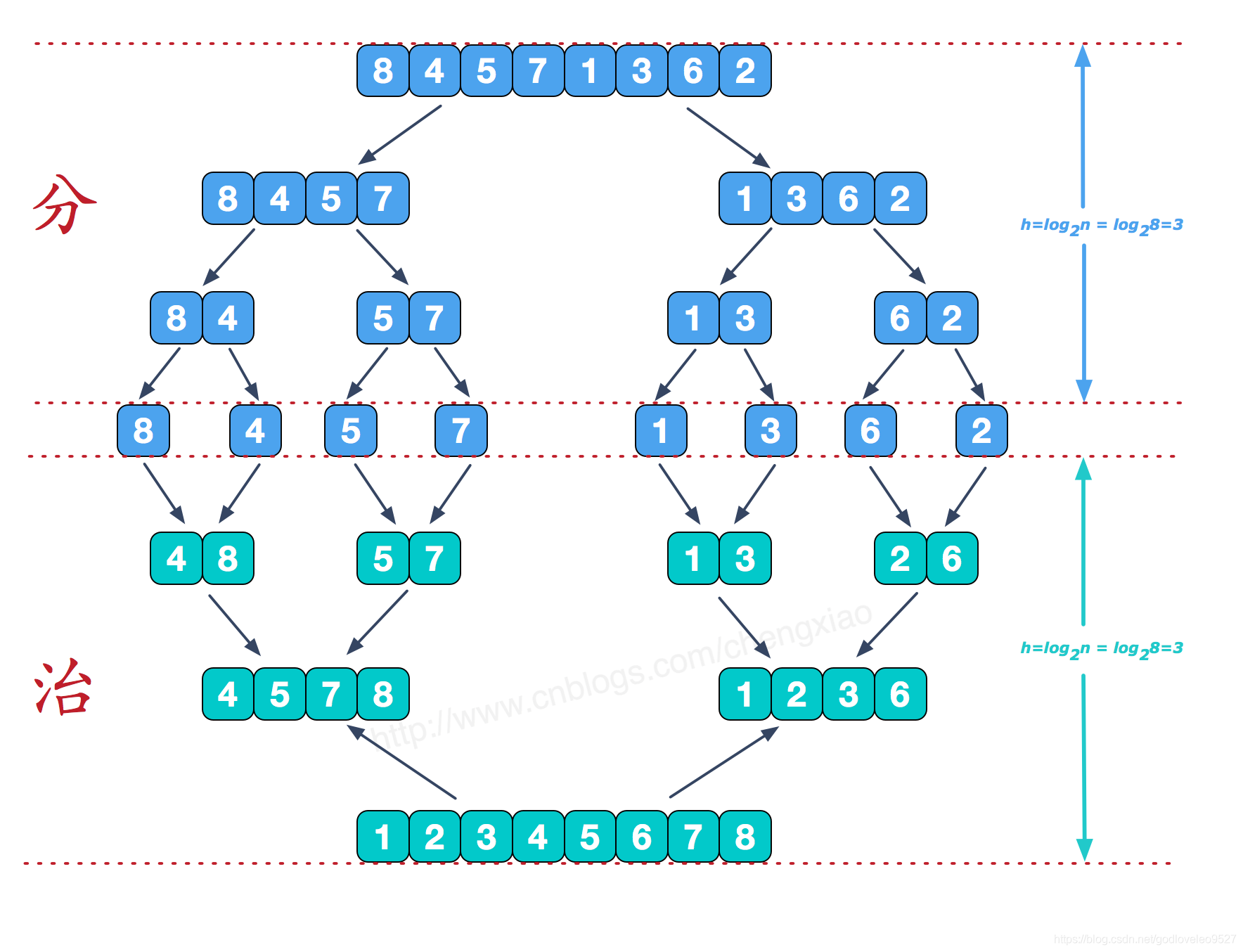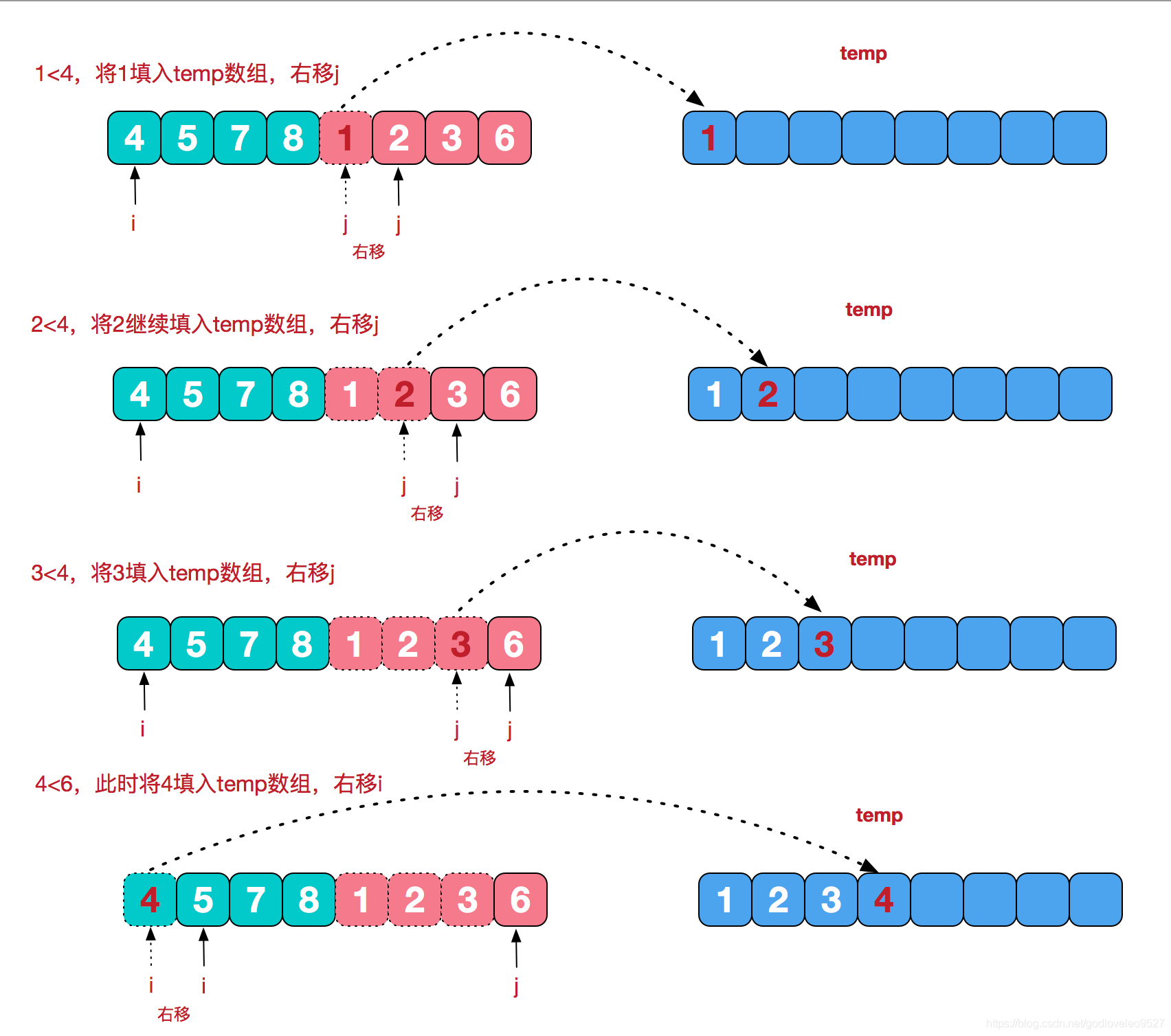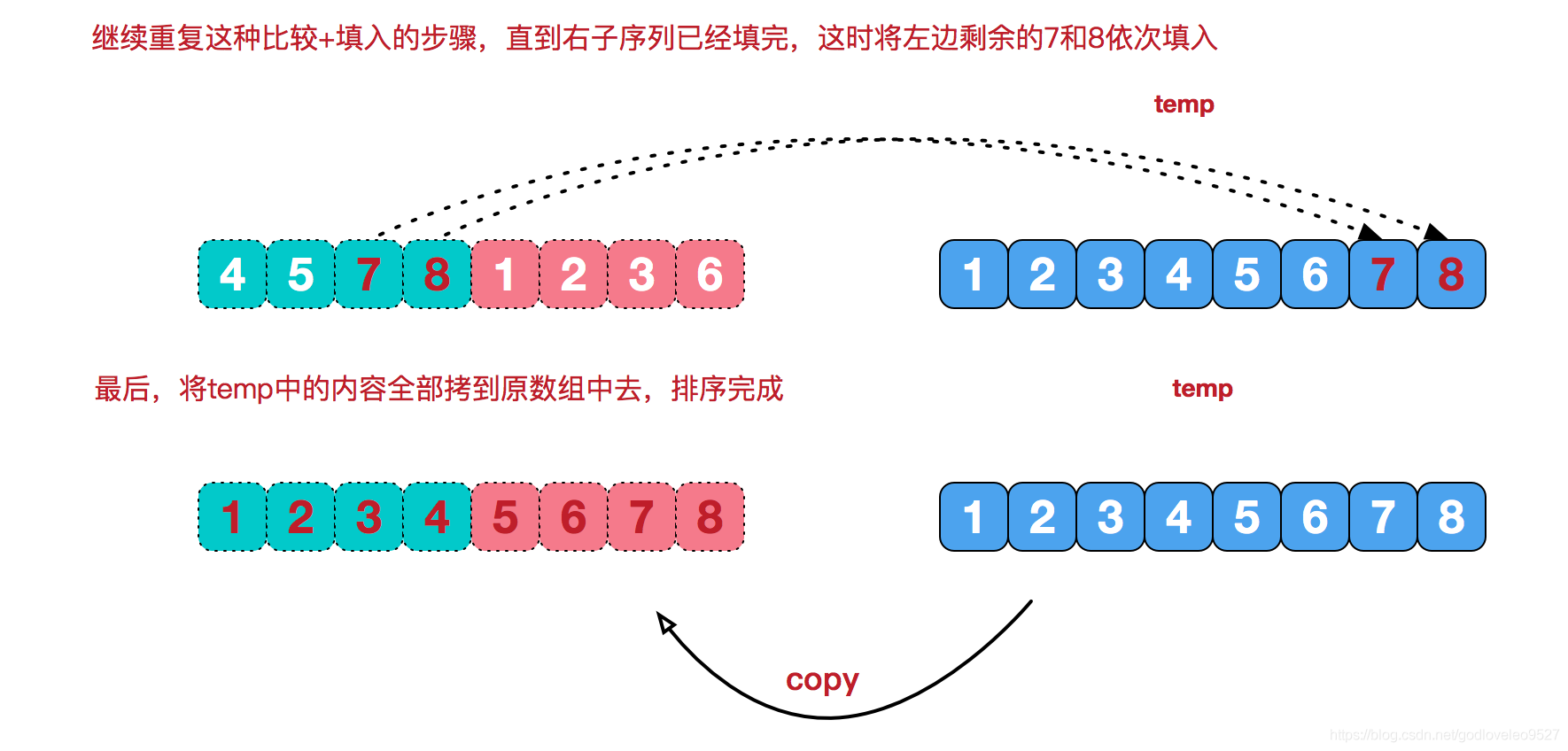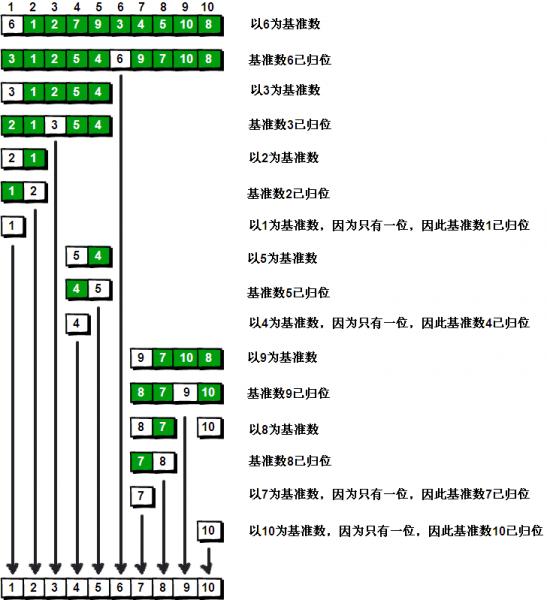Since learning to call the sort function of C++ directly, I write less and less sort code. Therefore, this article is written to summarize several common sorting algorithms.
In this article, we will see the following sort:
🏌🏻Bubble Sort
🪂Insertion Sort
🐧Merge Sort
🦴Quick Sort
Bubble Sort
Time compesity O(n2 )
General Ideas
Bubble sorting is one of the earliest sorting algorithms I came into contact with. Its main ideas are as follows:
A bubble compares all the elements in the sequence from the beginning to the end, and puts the largest one at the end.
All elements in the remaining sequence are compared again, with the largest at the end.
Repeat step 2.
Code Implementation(C)
1 2 3 4 5 6 7 8 9 10 11 12 13 void Bubble_sort (int arr[], int size) for (int i=0 ; i<size-1 ; i++) for (int j=0 ; j<size-i-1 ; j++) { if (arr[j] > arr[j+1 ]) { int tmp = arr[j]; arr[j] = arr[j+1 ]; a[j+1 ] = tmp; } } }
Insertion Sort
Time compesity O(n2 )
General Ideas
In a group of numbers to be sorted, assume that the first n-1 (n > = 2)numbers are already in order .
Insert the nth number into the previous ordinal number, so that the N numbers are also in order.
Repeat this until all are in order.
Code Implementation ©
1 2 3 4 5 6 7 8 9 10 11 12 13 14 void Insertion_Sort (int arr[], int size) int j, P; int tmp; for (P=1 ; P<N; P++) { tmp = arr[P]; for (j=P; j>0 && arr[j-1 ]>Tmp; j--) arr[j] = arr[j-1 ]; arr[j] = Tmp; } }
Merge Sort
General Ideas
Merge sort is a sort method based on the idea of merge . The algorithm adopts the classic divide and conquer strategy .
Divides the problem into some small problems.
Recursively solves the small problems,
“Repairs” the answers obtained in different stages.
Code Implementation ©
1 2 3 4 5 6 7 8 9 10 11 12 13 14 15 16 17 18 19 20 21 22 23 24 25 26 27 28 29 30 31 32 33 34 35 36 37 38 39 40 41 42 43 44 45 46 47 48 49 50 51 52 void MSort (ElementType A[], ElementType TmpArray[], int Left, int Right) int Center; if (Left < Right) { Center = (Left + Right) / 2 ; MSort(A, TmpArray, Left, Center); MSort(A, TmpArray, Center+1 , Right); Merge(A, TmpArray, Left, Center+1 , Right); } } void Mergesort (ElementType A[], int N) ElementType *TmpArray; TmpArray = malloc (N * sizeof (ElementType)); if (TmpArray != NULL ) { Msort(A, TmpArray, 0 , N-1 ); free (TmpArray); } else FatalError("No space for tmp array!!!" ); } void Merge (ElementType A[], ElementType TmpArray[], int Lpos, int Rpos, int RightEnd) int i, LeftEnd, NumElements, TmpPos; LeftEnd = Rpos - 1 ; TmpPos = Lpos; NumElements = RightEnd - Lpos + 1 ; while (Lpos <= LeftEnd && Rpos <= RightEnd) if (A[Lpos] <= A[Rpos]) TmpArray[TmpPos++] = A[Lpos++]; else TmpArray[TmpPos++] = A[Rpos++]; while (Lpos <= LeftEnd) TmpArray[TmpPos++] = A[Lpos++]; while (Rpos <= RightEnd) TmpArray[TmpPos++] = A[Rpos++]; for (i=0 ; i<NumElements; i++, RightEnd--) A[RightEnd] = TmpArray[RightEnd]; }
Quick Sort
General Ideas
Base on 6.
Use two sentries, one from right to left to find the first number smaller than 6, the other from left to right to find the first number larger than 6.
Swap the two number. You have to look from right to left first.
Repeat step 2 and step 3 until they meet each other.
Swap the meet number and 6.
Code Implementation ©
1 2 3 4 5 6 7 8 9 10 11 12 13 14 15 16 17 18 19 20 21 22 23 24 25 26 27 28 29 30 31 32 33 34 35 36 37 38 39 40 41 42 43 44 45 46 47 48 49 50 51 void Quicksort (ElementType A[], int N) Qsort(A, 0 , N-1 ); } ElementType Median3 (ElementType A[], int Left, int Right) int Center = (Left + Right) / 2 ; if (A[Left] > A[Center]) Swap(&A[Left], &A[Center]); if (A[Left] > A[Right]) Swap(&A[Left], &A[Right]); if (A[Center] > A[Right]) Swap(&A[Center], &A[Right]); Swap(&A[Center], &A[Right-1 ]); return A[Right--1 ]; } #define Cutoff (3) void Qsort (ElementType A[], int Left, int Right) int i, j; ElementType Pivot; if (Left + Cutoff <= Right) { Pivot = Median3(A, Left, Right); i = Left; j = Right - 1 ; for (;;) { while (A[++i] < Pivot){} while (A[--j] > Pivot){} if (i < j) Swap(&A[i], &A[j]); else break ; } Swap(&A[i], &A[Right-1 ]); Qsort(A, Left, i-1 ); Qsort(A, i+1 , Right); } else InsertionSort(A+Left, Right-Left+1 ); }




